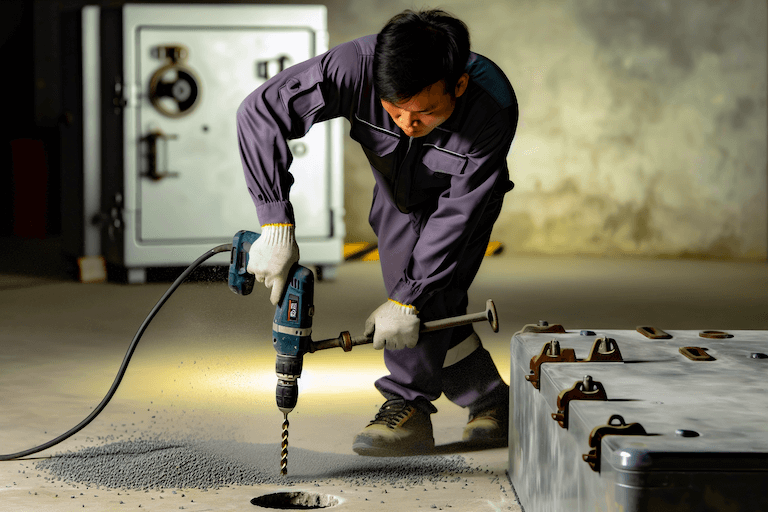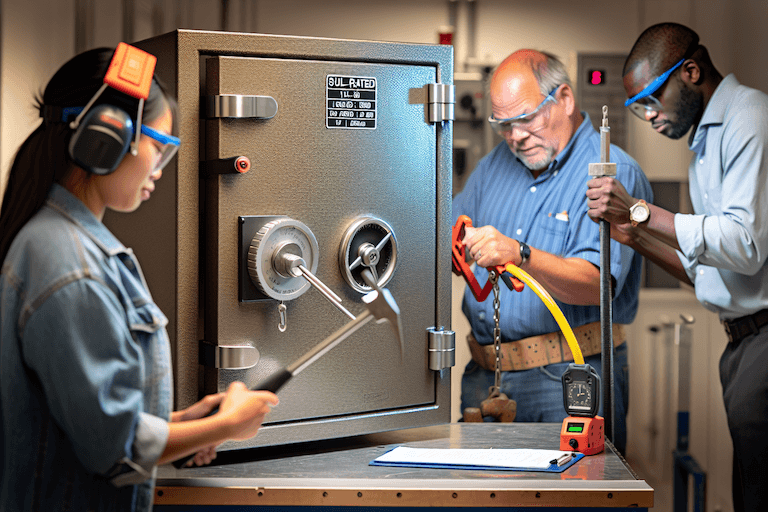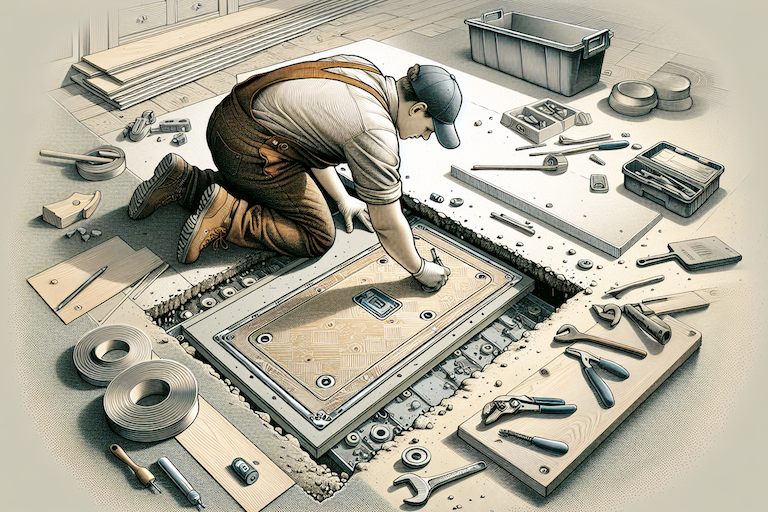
How to Bolt a Safe to the Floor: Step-by-Step Guide
Securing your safe to the floor? Learn exactly how to bolt a safe to the floor with this step-by-step guide. Find your location, gather your tools, and bolt with confidence.
Our methodical approach provides you with concise, easy-to-follow steps for a rock-solid safe installation, ensuring your valuables remain safeguarded.
The Importance of Bolting a Safe to the Floor
Bolting a safe to the floor is a critical security measure often overlooked. An unsecured safe, irrespective of its weight, could be tipped over, making it susceptible to pry attacks.
Smaller safes could be conveniently carried away by burglars for later cracking. Therefore, anchoring your safe to the floor dramatically enhances its security.
Bolting a safe also prevents potential accidents that could result from the safe tipping over, causing damage to your flooring or, worse, causing injury to someone.
Considerations Before Bolting a Safe to the Floor
Before embarking on the process of securing your safe, there are several aspects to consider:
The Type of Safe
Standalone home safes or gun safes will usually have pre-drilled anchor holes on the bottom designed for bolting the safe down, or indentations designed for drilling through. These holes may be plugged with caps or sit under the floor panel, which you will need to remove.
Other types of safe may need to be anchored a different way. For example, a floor safe is typically secured in the ground with concrete.
Identifying the Ideal Location
Identifying the right location for your safe is a crucial step. The chosen location should be discreet yet easily accessible to the owner.
Assessing the Floor Type
The type of flooring greatly impacts the bolting process. Concrete floors offer the best anchorage for safes, given their strength and durability. However, wooden floors can also be used, albeit ensuring they can withstand the safe's weight.
Evaluating the Safe's Weight and Dimensions
The safe's weight and dimensions should be compatible with the chosen location. A heavy safe requires a sturdy floor, while the safe's size should comfortably fit in the designated space.
Detailed Steps on How to Bolt a Safe to the Floor
Once you have taken into account the above considerations, you can proceed to bolt your safe to the floor. Here is a step-by-step guide on how to do it:
Step 1: Positioning the Safe
Position your safe in the chosen location and ensure the door can open and close without any hindrance.
Step 2: Locating the Mounting Holes
Open the safe's door and locate the mounting holes. These holes could either be in the safe’s floor or at the bottom corners.
Step 3: Marking the Hole Locations
If your safe is large enough to accommodate a drill, you can directly drill the holes through the safe into the floor. If not, mark the hole locations with a pencil or marker for drilling later.
Step 4: Drilling the Anchor Holes
After marking the holes, move your safe aside and start drilling. Use a drill bit that is suitable for your specific type of flooring.
Step 5: Cleaning the Drilled Holes
After drilling, clean up any dust or debris using a vacuum cleaner or a can of compressed air. This ensures that the bolts fit securely into the holes.
Step 6: Inserting and Securing the Bolts
Finally, place the safe back in position and insert the bolts through the safe into the drilled holes. Tighten the bolts using a wrench until they are firmly secured.
Bolting a Safe to Different Floor Types
The process of bolting a safe varies depending on the floor type. Here are some specific tips for different floor types:
Bolting a Safe to a Wooden Floor
When bolting a safe to a wooden floor, you need to drill a hole in each of the four anchoring locations. Next, place washers on the anchor bolts and secure the bolts using a socket set.
Bolting a Safe to a Concrete Floor
Bolting a safe to a concrete floor requires a bit more effort. You need to drill a hole in the floor at each of the four anchoring locations using a concrete drill bit. Then hammer the anchor bolts into the holes and tighten them with a socket set.
In Conclusion
Bolting a safe to the floor is a crucial step in enhancing your valuables' security. By following the above steps, you can effectively bolt your safe to the floor, ensuring it remains a reliable fortress against theft and accidents.
However, if you lack the necessary tools or skills, consider hiring a professional to bolt your safe correctly, guaranteeing your peace of mind. This is certainly recommended for in-floor installation.




